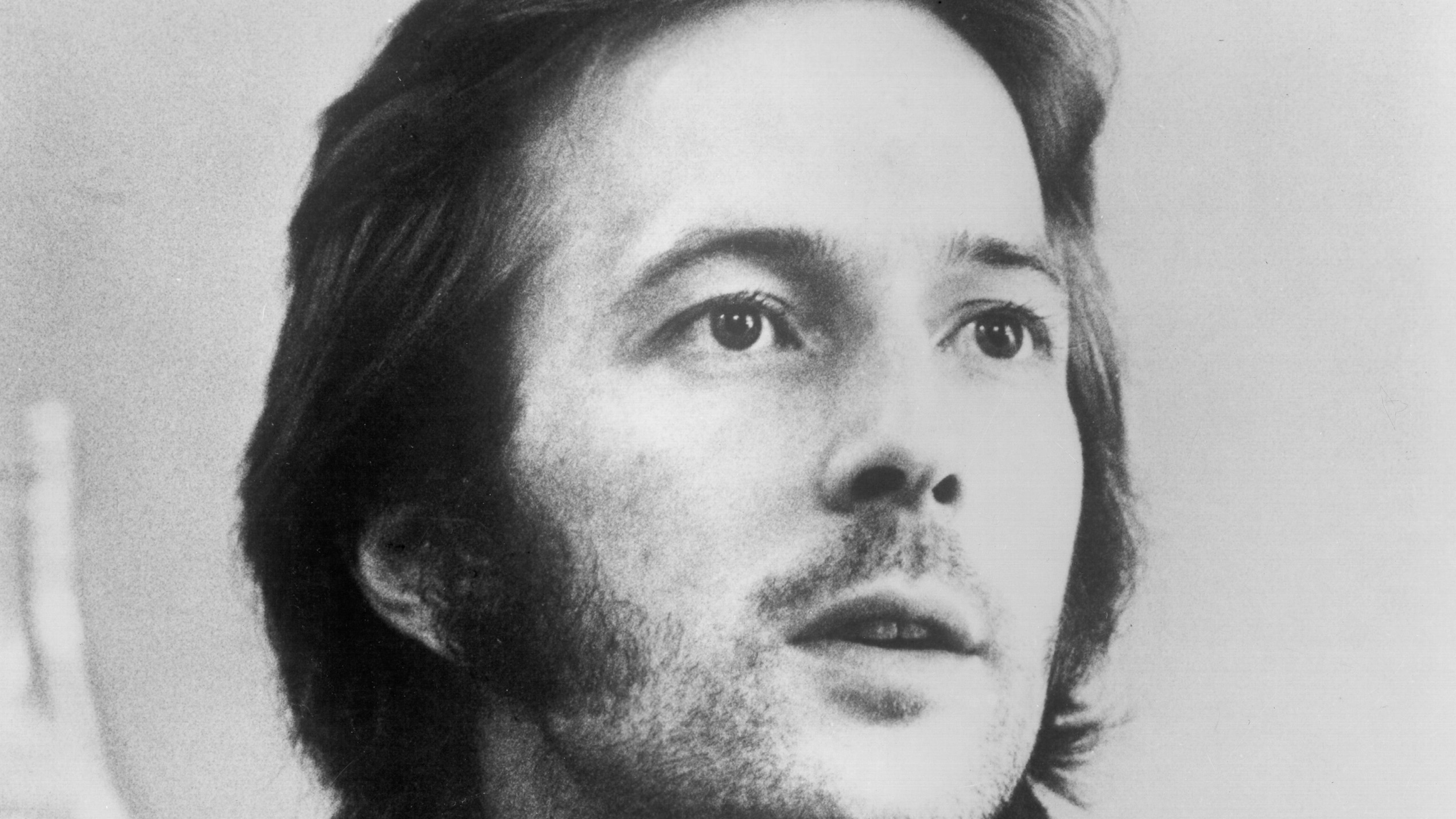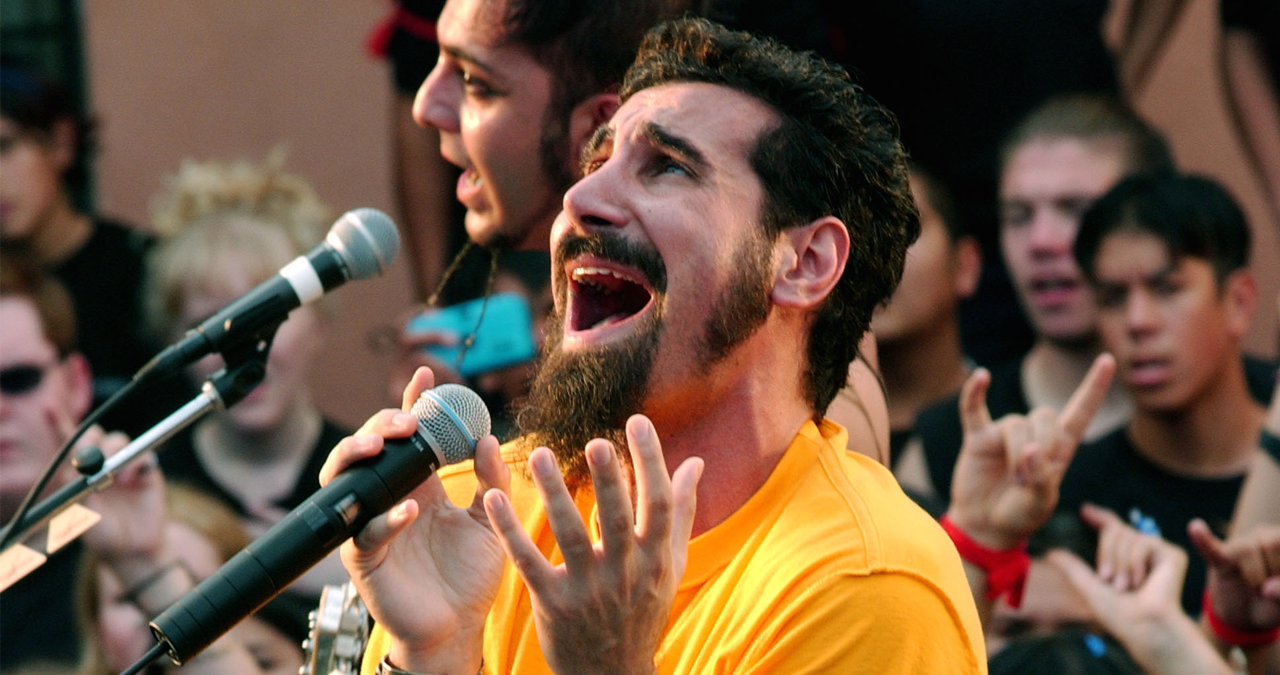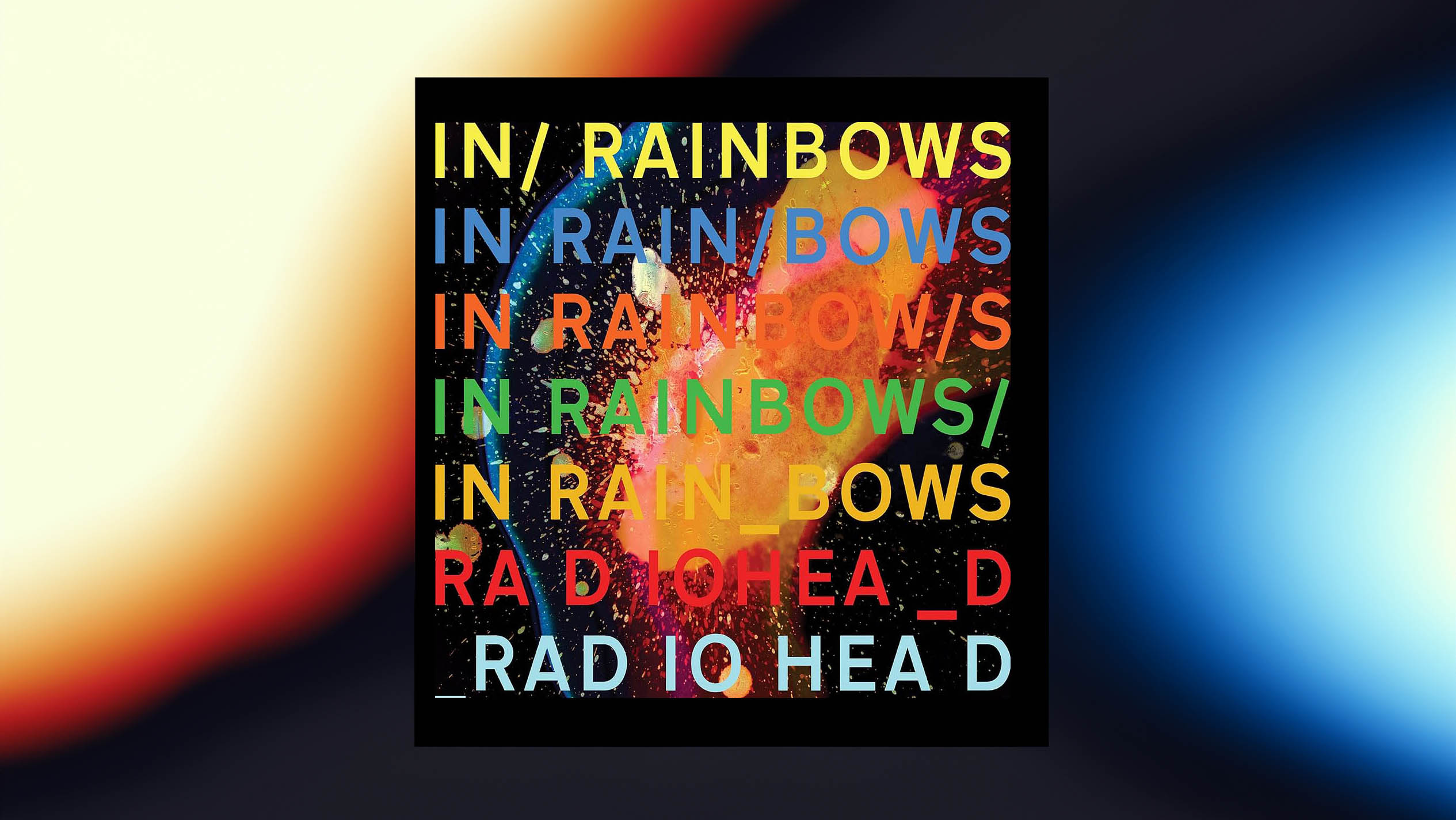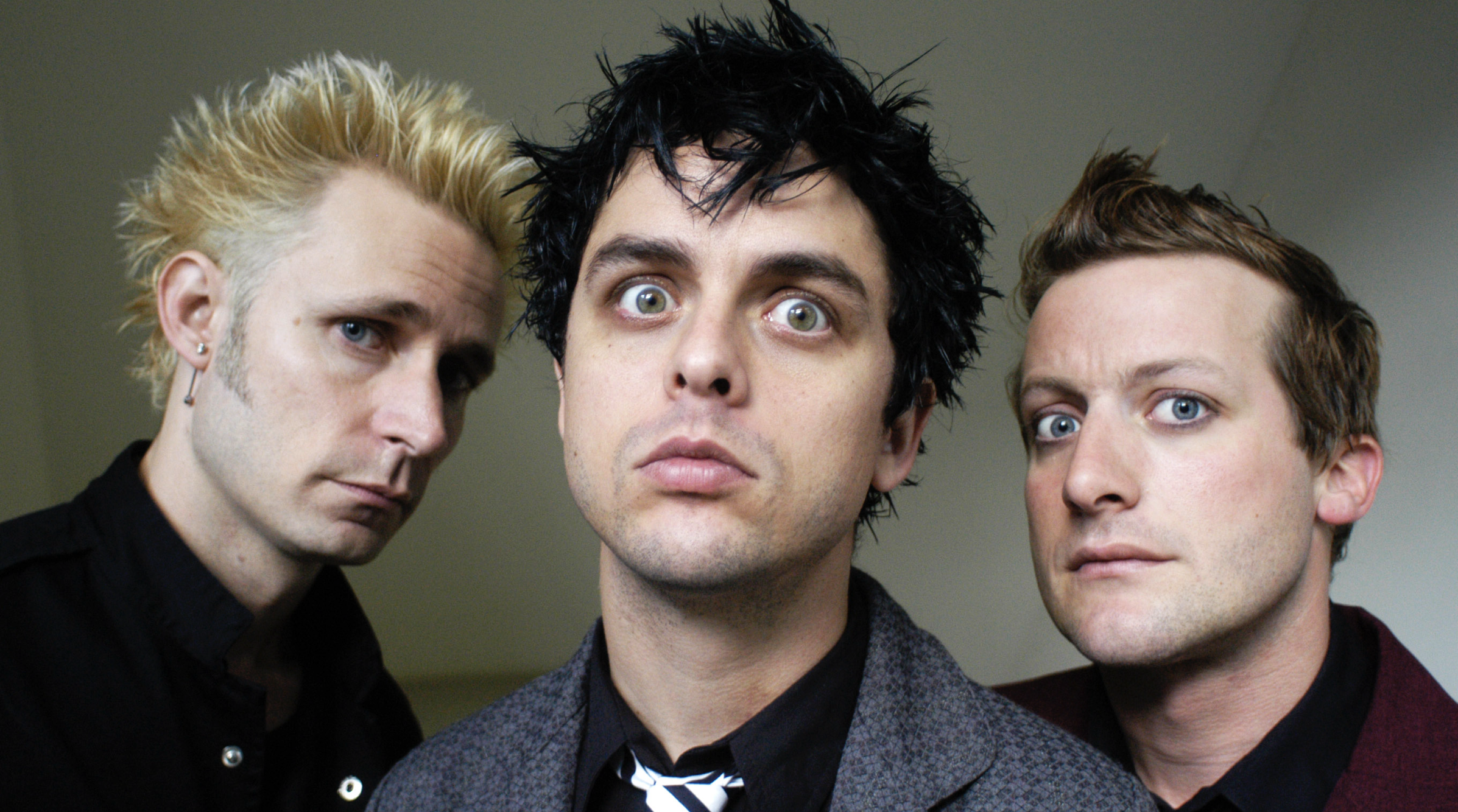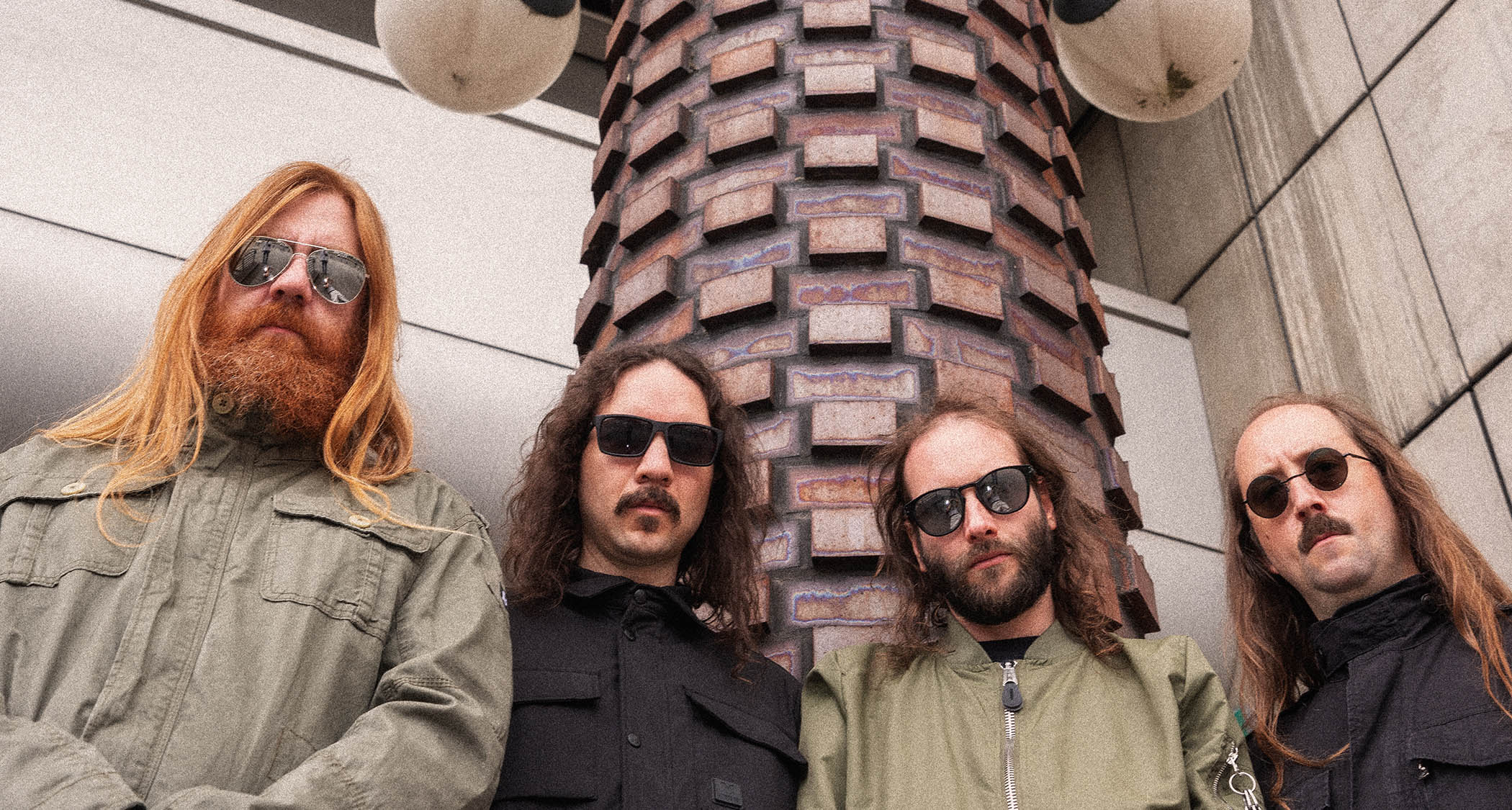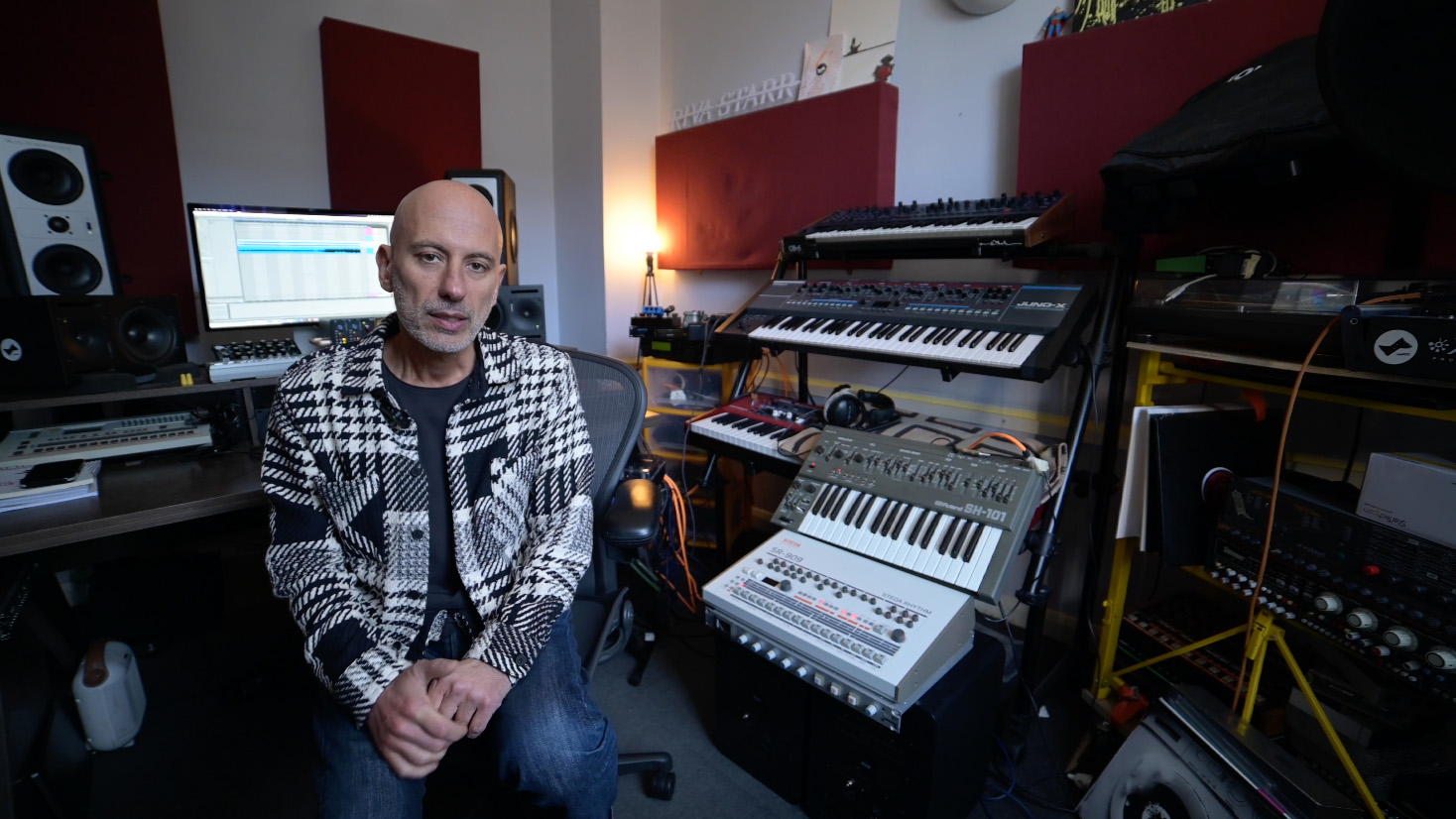AC/DC - ranked! All 17 studio albums, from worst to best
As the old song goes: "Let there be rock!"
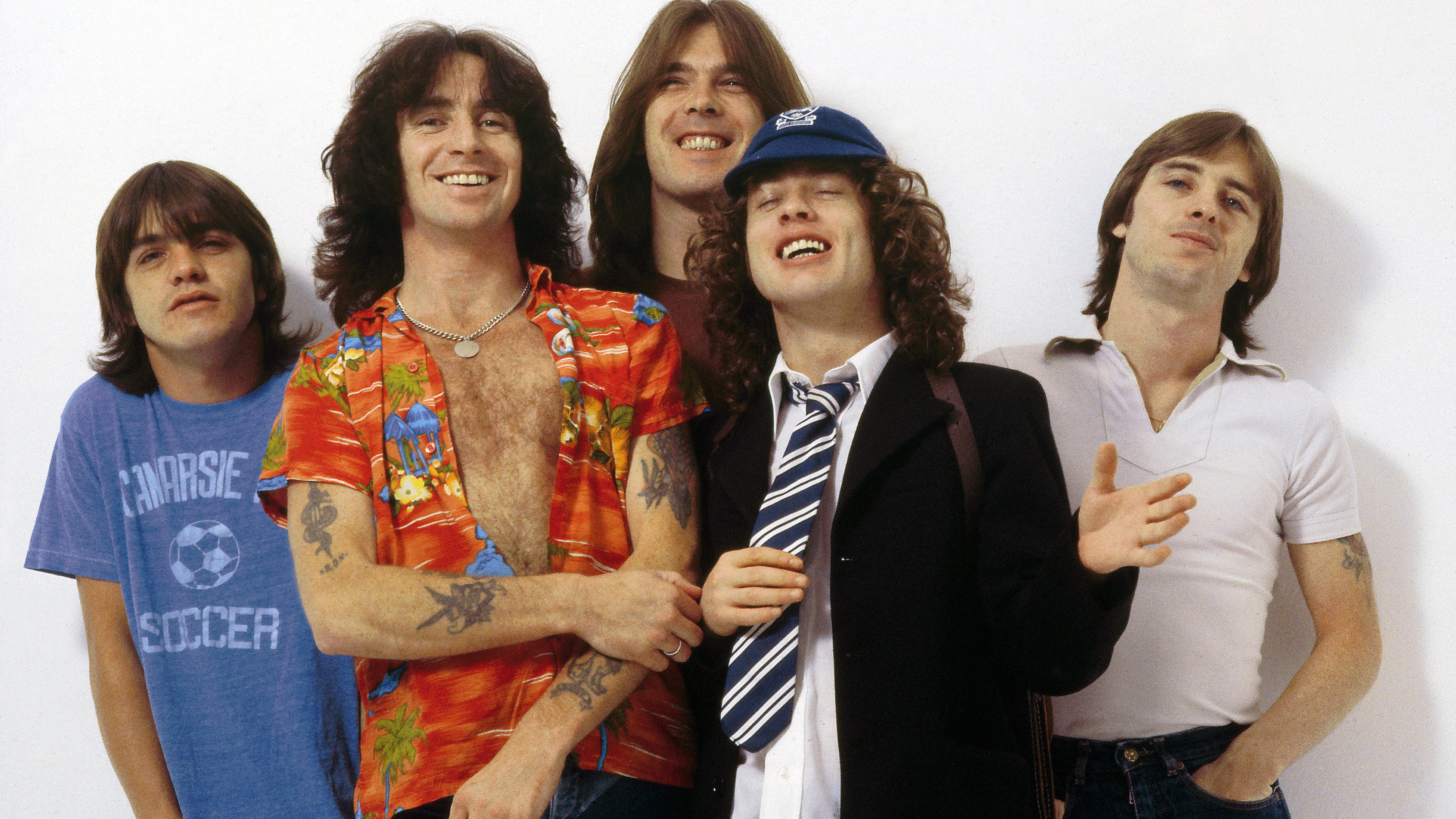
It was once suggested to AC/DC’s guitar-playing brothers Malcolm and Angus Young that all of their albums sounded the same.
“Same band!” Malcolm replied. “That’s the good thing about us. It’s just loud rock’n’roll – wham, bam, thank you ma’am!”
To which Angus added with irrefutable logic: “You don’t go to the butcher for brain surgery.”
However, not all AC/DC albums are made equal...
Here, we rank all 17 of the band's studio albums.
The list does not include the movie soundtrack compilations (Who Made Who, Iron Man 2), nor the mini-album '74 Jailbreak or the Bonfire box set.
And we begin at the bottom of the pile...
Get the MusicRadar Newsletter
Want all the hottest music and gear news, reviews, deals, features and more, direct to your inbox? Sign up here.
17. Fly On The Wall (1985)
In 2003, Malcolm Young had this to say about the band’s least-loved album, Fly On The Wall: “Even though it might be one of our worst, it’s still fucking okay.”
Except it wasn’t. It was awful.
Just five years since AC/DC had shaken the world with Back In Black, the band sounded burned out with Fly On The Wall.
Songs such as Danger, Stand Up and Hell Or High Water were as tired and generic as their titles implied.
A couple of dirty-joke numbers, Sink The Pink and Playing With Girls, lightened the mood.
But only one song, Shake Your Foundations, had the kind of groove and big chorus that had come so easily to AC/DC in the past.
There was an edge of desperation in the way that Brian Johnson screeched through this stuff.
And a trashy production, by Malcolm and Angus, made them sound like a tribute act on a bad night.
16. Blow Up Your Video (1988)
The band’s last album of the 1980s arrived at an opportune time.
In a review of Blow Up Your Video for Rolling Stone, critic Jim Farber noted AC/DC’s renewed “hip status”, citing the band’s influence in the records that Rick Rubin had produced for The Cult and the Beastie Boys.
Farber declared: “The original riff masters still rule.”
He went a little too far, however, when hailing Blow Up Your Video as “the band’s catchiest work since its classic album Back In Black.”
Blow Up Your Video was AC/DC’s first album in 10 years to feature Harry Vanda and George Young as producers.
The pair were former members of ’60s hitmakers the Easybeats.
George Young was big brother to Angus and Malcolm.
But if the return of Vanda and Young on Blow Up Your Video promised a return to the glory days, it was not to be.
The album begins with a bang – the hard and fast Heatseeker.
The band’s rhythmic power is evident in tracks such as Some Sin For Nuthin’ and That’s The Way I Wanna Rock ‘N’ Roll.
But elsewhere – in songs like Kissin’ Dynamite, Two’s Up, Ruff Stuff, This Means War – it’s all filler, no killer.
15. Stiff Upper Lip (2000)
Amid all the fuss about the dawn of a new millennium, in AC/DC’s world nothing changed.
Stiff Upper Lip could have been made at any point in the preceding 20 years. It was as old-school as Angus’ cap and shorts.
And nobody was happier about that than Howard Stern, the famous American shock-jock and avowed AC/DC fanatic. Citing a line from the album’s title track – “I was born with a stiff” – Stern declared the band “fucking geniuses!”
The original plan was to use producer Bruce Fairbairn, who had been instrumental in getting the band back on track with 1990’s The Razors Edge. But in 1999 Fairbairn died suddenly, aged 49.
In the wake of this tragedy, George Young came out of retirement to produce Stiff Upper Lip, albeit without his old partner Harry Vanda. Instead, George was assisted by Mike Fraser, who had engineered and mixed The Razors Edge.
The title track is great – a swinging boogie. Satellite Blues is punchy. Can’t Stop Rock ‘N’ Roll is the spiritual heir to the classic Rock And Roll Ain’t Noise Pollution.
The spirit of this album was neatly summarised by MOJO writer and long-time AC/DC supporter Sylvie Simmons: “The overall impression is of a band deconstructing its music to its basic elements – the Chuck Berry rock ‘n’roll of Can’t Stand Still; the metal blues of Meltdown; the ZZ Top boogie of Come And Get It – and having a lot of fun putting it all back together.”
14. Rock Or Bust (2014)
The 11 songs on Rock Or Bust were credited to Malcolm and Angus Young, but for the first time in the band’s history, Malcolm wasn’t around to play them.
He had been forced into retirement due to the onset of dementia. In his place was his nephew Stevie Young, perhaps the only player who could have come into the band at such a difficult time.
Stevie had stood in for Malcolm before, during the Blow Up Your Video tour in the late ’80s, when Malcolm was in rehab.
As Angus Young said: “Stevie’s like Malcolm, a real rhythm player, like Keith Richards, Ike Turner, Pete Townshend. There aren’t many like them today.”
The cover of Rock Or Bust had the band’s logo as exploding rock. That much was classic AC/DC.
But on the inside cover was an image of great poignancy: a sepia photograph of two guitars, Angus’ Gibson SG and Malcolm’s Gretsch, resting together against a Marshall amplifier stack, with a line from the song Rock Or Bust printed above: IN ROCK WE TRUST.
A final message was printed on a black page opposite a close-up shot of that Gretsch guitar: ‘And most important of all, thanks to Mal, who made it all possible.’
In this sense, Rock Or Bust was as much a tribute to Malcolm Young as Back In Black was to Bon Scott.
And if this was not as great an album as many that had come before it, in the circumstances it was more than good enough.
There was pure feel-good rock ’n’ roll in songs such as Play Ball and Rock The Blues Away.
And in the title track, another anthem.
13. Power Up (2020)
The title was a statement of intent, like those of previous landmark AC/DC albums: High Voltage, Let There Be Rock, If You Want Blood You’ve Got It, For Those About To Rock We Salute You and, most evocative of all, Back In Black.
“AC/DC has always been about the power thing,” Angus told Classic Rock. “I’ve always felt when I was plugging in my guitar that I was plugging in to a big electrical grid. So when ‘Power Up’ came into my head, I thought, yeah, that’s it.”
It was AC/DC’s first album since the death of Malcolm Young, but all 12 songs were based on ideas that Angus and Malcolm had worked on right up to the time when Malcolm could no longer do so.
“This one’s for Mal,” Angus said. “I always think he’s part of it, you know? He’s still with us in spirit. I still feel the presence.”
With a classic, no-frills production by Brendan O’Brien, who worked on the preceding Black Ice and Rock Or Bust, Power Up is straight-shooting hard rock’n’roll from the masters of the art — typified by the knockout single Shot In The Dark.
This may turn out to be the last AC/DC album. All told, it wouldn’t be a bad way to finish.
12. Ballbreaker (1995)
It was a dream come true for Rick Rubin to produce AC/DC’s song Big Gun for the Last Action Hero movie soundtrack in 1993. He had loved the band since he was a kid.
What’s more, as a producer Rubin had done his best to make other bands sound like AC/DC – notably The Cult, on their 1987 album Electric, and The Four Horsemen, on their 1991 debut Nobody Said It Was Easy.
Rubin was the new face on the team for the Ballbreaker album.
More significantly, a familiar face was back in the band. On drums, Phil Rudd. His return was hailed by Malcolm Young as “pure magic”.
Even so, the recording of Ballbreaker was a frustrating process.
The initial sessions at the Power Station studios in New York City did not capture the live ambience that Malcolm wanted.
The operation was moved to Los Angeles and Ocean Way studios in early 1995. But even then, it was a struggle to get this album made.
Rubin’s methodology was painstaking. Reportedly, he had the band running through as many as 50 takes of a single song.
So when, after five long months in LA, the album was at last finished, so was Rick Rubin’s working relationship with AC/DC.
But they did get some great stuff down on Ballbreaker. Hard As A Rock has a deep groove. The album’s title track is an out-and-out bruiser.
And best of all is Boogie Man – AC/DC’s finest blues number since Bon Scott bared his soul with Ride On back in ’76.
11. Black Ice (2008)
There was a touch of irony in AC/DC’s choice of producer for Black Ice.
After being driven half-mad by Rick Rubin’s working methods on Ballbreaker, the band turned to Brendan O’Brien, who had started out engineering albums on Rubin’s label Def American.
O’Brien had since produced some of the biggest rock albums of the ’90s by Pearl Jam, Rage Against The Machine, Stone Temple Pilots and Korn, and in the following decade three albums for Bruce Springsteen.
His approach with AC/DC was quite unlike Rubin’s. It was more of a throwback to the days of Vanda and Young, most of the tracks being cut live in the studio, with only minimal overdubs.
As a result, Black Ice had a real vibe to it, a feeling of spontaneity. And the sound of it was huge, better than any AC/DC record since The Razors Edge.
With 15 tracks, Black Ice has the longest running time of any AC/DC studio album, just short of an hour, and perhaps a little overlong, with a few songs, such as Money Made and Smash ‘N’ Grab, just making up the numbers.
But the album’s opening track, Rock N Roll Train, stands tall as a genuine AC/DC classic. With its crunching riff and reach-for-the-sky chorus, it would not sound out of place on Back In Black.
In the freewheeling Anything Goes, there’s a nod to Slade, and to Brian Johnson’s glam rock days with Geordie in the early ’70s.
And there’s a soulful edge to Johnson’s voice in Rock N Roll Dream – the closest thing to an AC/DC ballad since Love Song back in ’75.
The review of Black Ice by Rolling Stone’s Brian Hiatt hailed the purity of AC/DC’s ethos. “There’s something almost elegiac about Black Ice’s multiple odes to rock – Rocking All the Way, Rock N Roll Dream, etc. These guys are true believers, fighting a war no one told them ended long ago. And for that, you’ve got to salute them.”
10. High Voltage (1975)
High Voltage was the title of AC/DC’s first international release in 1976. But that was a compilation of tracks culled from the band’s first two Australian albums.
The original, Aussie-only High Voltage was the band’s debut album proper.
And while it doesn’t reach the heights of the truly legendary rock debuts (think Led Zeppelin, Black Sabbath, Van Halen, Guns N’ Roses), there are a couple of signs of what was to come.
Produced by Harry Vanda and George Young, High Voltage was recorded in just six days in November 1974 at Albert Studio in Sydney.
The band’s line-up at this stage still included Rob Bailey on bass and Peter Clack on drums, but some tracks featured either Malcolm or George Young on bass, and all but one track featured session drummer Tony Currenti.
High Voltage is a little hit-and-miss. One track in particular seems out of place and out of character - a ballad titled simply Love Song.
Only two tracks from this original High Voltage made the cut for the second High Voltage, and they’re both great.
Little Lover is a filthy blues number, and the unapologetically titled She’s Got Balls was the first song that Bon Scott wrote with the band.
Angus Young recalled: “She’s Got Balls was about his first wife. Bon could conjure a story from anything.”
9. The Razors Edge (1990)
It was the best-sounding record the band had made since Mutt Lange was their producer, and no wonder. In the producer’s chair for The Razors Edge was Bruce Fairbairn, who had worked on a number of multi-million selling rock albums, including the two that made Bon Jovi a household name, Slippery When Wet and New Jersey, and those that revived Aerosmith’s career, Permanent Vacation and Pump.
The Razors Edge begins with the most over-the-top AC/DC song since For Those About To Rock (We Salute You).
Thunderstruck was based on a fast-fingered guitar lick that came to Angus more by accident than design, while, in his words, “just fiddling with my left hand”.
The chant of ‘Thunder!’ is reminiscent of the early classic T.N.T.
And Brian Johnson sings it with everything he’s got - as Angus once said, “like somebody dropped a truck on his foot”.
Three other songs stand out.
Fire Your Guns is an all-out attack at breakneck speed. Moneytalks is a catchy, freewheeling rock’n’roll tune like something off Back In Black. And the album’s title track has heaviness of a different kind, all bad vibes and dark power.
Elsewhere there is some weaker material: Rock Your Heart Out, Shot Of Love, Are You Ready, and a joke song, Mistress For Christmas, that stinks like a wet dog.
But there was enough here, in Thunderstruck especially, to make this AC/DC’s biggest album in almost a decade.
8. Flick Of The Switch (1983)
AC/DC’s most underrated album was in its own way as pure and uncompromising a statement of artistic integrity as they ever made.
In reaction to three albums that Mutt Lange had produced before it, Flick Of The Switch was, in Malcolm Young’s words, “thrown together real quick”.
The songs were simplistic even by AC/DC’s own standards – rough and tough, with choruses shouted out like a bunch of drunkards, the way they used to before Mutt polished up their act.
Produced by the band – in effect, Malcolm and Angus — Flick Of The Switch had a sound that was bone-dry and a rawness comparable to late-’70s classics Let There Be Rock and Powerage.
Also released in 1983 was Def Leppard’s Pyromania, produced by Mutt Lange. It was an album that elevated hard rock to a new state-of-the-art, with a huge production utilising cutting-edge technology, multi-tracked vocal harmonies and pop hooks at every turn.
Pyromania sold six million copies inside a year.
By contrast, Flick Of The Switch was a badass rock record with no hope of radio play.
But it has two anthems in the classic AC/DC tradition – Nervous Shakedown, with a great, wristy riff from Malcolm, and Guns For Hire, its jolting intro played by Angus as if he had a cattle-prod up his backside.
And among the deep cuts there is Badlands, one of the meanest-sounding numbers the band have ever recorded.
7. For Those About To Rock (We Salute You) (1981)
Back In Black was a hard act to follow, but AC/DC did so in emphatic style. For Those About To Rock (We Salute You) went to No 1 in the US, No 3 in the UK and hit top 10s across the world.
From the outset it was producer Mutt Lange’s aim to create an even bigger sound than before – as defined in this album’s title track and cornerstone, with its slow-rolling, gargantuan riff, monumental chorus, and a frenzied climax punctuated by deafening cannon fire.
As Angus Young told writer Sylvie Simmons in 1981: “It’s a very inspiring song. It makes you feel powerful, and I think that’s what rock’n’roll’s all about.”
With Lange in pursuit of sonic perfection, there came a point, Malcolm Young said, when it felt as if the life was getting sucked out of these songs.
This album was AC/DC super-sized, exactly as Lange had intended. Only bigger did not mean better.
Where Back In Black had a perfect balance of rock’n’roll groove and heavy metal power, the scales tipped towards the latter on For Those About To Rock.
This album also has some generic, uninspired, throwaway numbers: Inject The Venom, Night Of The Long Knives, Breaking The Rules.
But that monolithic title track carries the album, along with some swinging boogie in Let’s Get It Up, furious energy in the fastest track, Snowballed, and a simmering intensity in the album’s end song Spellbound.
6. Dirty Deeds Done Dirt Cheap (1976)
As its title implied, this was an album so rough around the edges and downright sleazy that Atlantic Records deemed it commercially unviable and refused to release it in the US in 1976.
It was only after the success of Back In Black four years later that Dirty Deeds Done Dirt Cheap was belatedly released in America.
There were also different versions of the album for the Australian and European markets, with different covers and track listings.
The Aussie edition featured the tense, thrilling Jailbreak and the tongue-in-cheek R.I.P. (Rock In Peace).
In Europe those two tracks were replaced with a new recording of early song Rocker and a tune named Love At First Feel, which has a groove as filthy as its lyrics.
Dirty Deeds Done Dirt Cheap was memorably described as “AC/DC’s most deviant album”.
Its title track is an anthem with a palpable sense of menace.
Big Balls is one long, extended joke, sung by Bon Scott in a comical posh accent, and ending with a chorus of “Bollocks! Knackers! Bollocks! Knackers!”
But amid all the rough stuff and the silly stuff is arguably the deepest song of AC/DC’s entire career.
In the world-weary blues number Ride On, the singer who so loved to brag about all the women he’d had was instead reflecting upon the loneliness of a life on the road.
It was in this song, more than any other, that Bon Scott truly bared his soul.
5. T.N.T. (1975)
The band’s second album was a huge leap forward from the first.
This was immediately apparent in the opening track It’s A Long Way To The Top (If You Wanna Rock ‘N’ Roll), powered by an electrifying staccato riff and climaxing with Bon Scott playing a solo on bagpipes - having never played them before, and only then on the insistence of George Young.
![AC/DC - It's A Long Way To The Top [Official Music Video], Full HD (Remaster, Resync and Upscale) - YouTube](https://img.youtube.com/vi/g-qkY2yj4_A/maxresdefault.jpg)
With drummer Phil Rudd and bassist Mark Evans now established as a rock-solid rhythm section, the T.N.T. album was again recorded at Albert Studios with Vanda and Young.
Confusingly, the song High Voltage was included on this album.
Both this and the actual title track, T.N.T., became AC/DC anthems.
The menacing Live Wire would serve as a dramatic opening number in the live set even as late at 1979.
There is a boisterous cover of Chuck Berry’s 1957 classic School Days and a Berry-inspired original, Rocker, in which Bon created his own mythology in the opening line: “I’m a rocker, roller, right-out-of-controller.”
And there is also the band’s most celebrated blues track, The Jack, in which a hilarious lyric from Bon employed poker as an extended sexual metaphor.
Released on December 1, 1975, T.N.T. made No 2 on the Australian chart.
At a time when Led Zeppelin, Deep Purple and Black Sabbath were still the reigning masters of heavy rock, Australia suddenly had heroes of its own.
4. Let There Be Rock (1977)
In the year of the punk rock explosion there was no rowdier record than Let There Be Rock.
It was conceived as what Angus Young called simply “a fucking good guitar album”, and at its heart were four songs that would become cornerstones of the band’s live set for decades to come – Hell Ain’t A Bad Place To Be, Bad Boy Boogie, Whole Lotta Rosie and the title track, Let There Be Rock.
From the get-go, the remit from Vanda and Young was to capture the energy of the band’s live performance – to get that lighting in a bottle. To this end, the album was recorded as-live, with band playing together, full-tilt.
In this sense, Let There Be Rock was as raw as any of the great punk albums of 1977.
The title track is a riotous rock ‘n’ roll sermon inspired by Chuck Berry’s Roll Over Beethoven – essentially the creation myth of rock, for which Bon cribbed lyrics from a Bible bought in a Sydney bookstore. In the recording of this song, cut live off the studio floor, the momentum in the band’s performance was such that George Young refused to stop Angus mid-solo when his amp overheated and caught fire.
Bad Boy Boogie is a classic rebel-without-a-cause song that was developed on stage into a showcase for Angus’ guitar-hero pyrotechnics.
There was more of Bon’s vulgar humour in another dirty blues called Crabsody In Blue (replaced by an alternate take of Problem Child on the US version).
Hell Ain’t A Bad Place To Be has one of Malcolm Young’s greatest riffs.
And most famous of all is Whole Lotta Rosie, with its explosive staccato intro and runaway-train riff, and in Bon’s lyric was the most famous story he ever told, his affectionate tribute to a heavyweight groupie in Melbourne with whom he had grappled in 1975.
3. Highway To Hell (1979)
In 1979, Malcolm and Angus Young had to make one of the toughest decisions of their lives.
Atlantic Records wanted to hear songs that could get to radio in America. Reluctantly, Malcolm and Angus agreed to move on without their trusted producers — brother George and his sidekick Harry Vanda.
First they turned to Eddie Kramer, a famous producer who had worked with Hendrix and Led Zeppelin. But when the sessions with Kramer were aborted, in came rising star Mutt Lange, who had just produced a UK No 1 for The Boomtown Rats, Rat Trap.
Lange was the perfect fit – a guy with a feel for hard rock music and a shrewd pop sensibility.
What Lange got out of the band was exactly what Atlantic had demanded – a hard rock record that was true to AC/DC’s roots, but with a cleaner edge.
This was immediately apparent in the very first song on the album, that thumping title track. Its name came from Angus, who was asked to describe the band’s gruelling 1978 tour and replied bluntly, “It’s a fucking highway to hell.”
Bon Scott ran with it in a lyric that raised two fingers to the so-called moral majority and became a defining statement of devil-may-care rock’n’roll attitude from a legendary hellraiser.
The route-one chorus was pumped up by Lange into a noise to raise the dead. And in the home run came a moment of pure abandon from Angus, as he slid his fingers down the frets to create a noise as thrilling as anything that his hero Chuck Berry had conjured up before him.
It was with Touch Too Much that Lange really honed the band’s sound for radio. The funky riff was twanged instead of hammered; the chorus punched through with Lange’s vocals high in the mix with Bon’s. And the lyrics were vintage Bon, as he eulogised a woman with a body like Michaelangelo’s Venus — but with arms!
There were big hooks and dirty grooves in Girls Got Rhythm, Shot Down In Flames and Get It Hot.
And there were some really heavy numbers on the album. Heaviest of all was Walk All Over You, started at a crawl, with Phil Rudd ratcheting up the tension before the band blasted into high gear.
Fastest was Beating Around The Bush, a white-knuckle ride with an echo of an old rock classic in a riff like Fleetwood Mac’s Oh Well played at double speed.
There was wild energy in the song they named after their live album, If You Want Blood (You’ve Got It).
And ending the album on a sinister note was Night Prowler, a tense, creepy blues song wherein Bon adopted the persona of a murderous villain. Angus never played a better blues solo than the one on Night Prowler. And for all the grisly imagery in the lyrics, the song ended with a weird joke, as Bon quoted mock alien language from ’70s sci-fi sitcom Mork & Mindy: “Shazbot! Nanu nanu!”
Highway To Hell was AC/DC’s first million-seller — and the last act of a legendary rock ’n’ roll singer.
2. Powerage (1978)
The connoisseurs’ AC/DC album has many famous fans, among them Keith Richards and Def Leppard singer Joe Elliott.
Keef said of Powerage: “I love it. It’s just great songs. The whole band means it, and you can hear it. It has spirit. That’s what I love about recording. It’s not just the sounds – you can actually capture a spirit. Timeless.”
Joe Elliott hailed Powerage as “unbeatable”.
He told Classic Rock: “It ain’t rocket science — it’s pure rock ’n’ roll. The whole record is stunning.
“Rock ’N’ Roll Damnation is a brilliant opening track. And then you’ve got Riff Raff, Sin City, Gimme A Bullet, Down Payment Blues…”
He continued: “One of the really deep cuts that I love is What’s Next To The Moon. The way Bon sings: ‘I tied my baby to the railroad tracks…’
“Nobody wrote lyrics like Bon’s. The guy had the greatest gruff, soulful voice and the best sense of humour that any singer has ever had.
“Some of Bon’s best stuff is on Powerage, the stuff about being on the dole in Down Payment Blues, and all the great lines in Sin City – ‘Bring on the dancing girls and put the champagne on ice!’ Fantastic!”
Down Payment Blues was not a blues song in the conventional sense, but over a grinding riff Bon laid out the harsh realities of all the years he had spent living hand-to-mouth.
And in Gone Shootin’, AC/DC’s funkiest song, he sang of his doomed relationship with a junkie girlfriend. The devil was in the details: how the girl never made it past the bedroom door, and how he stirred his coffee with the same spoon that she used for cooking up heroin.
On every level, Powerage is AC/DC at their most gritty and authentic.
1. Back In Black (1980)
It’s the biggest-selling rock album of all time, and arguably the best.
Moreover, what AC/DC achieved with Back In Black was surely the greatest comeback in the entire history of rock’n’roll.
The death of Bon Scott on February 19, 1980 might have ended the band.
Instead, with Brian Johnson as their new singer, AC/DC emerged from their darkest hour to claim a famous victory.
Bon was still alive when work on Back In Black began in January 1980. With the band based in London, the Young brothers knocked out the first demos with Bon playing drums, as he had done as a young man in his first groups back in Australia.
Even at such an early stage, Bon was sure that this album would be AC/DC’s ticket to the big time. Famously he had told his mother in a phone call to Australia: “This one is going to be it!”
The circumstances of Bon’s death remain the subject of rumour and conjecture. He died after a night of drinking with friends in London. In the official inquest, the coroner cited ‘death by misadventure’. He was 33.
Bon’s family gave their blessing to the Young brothers to carry on with the band.
Events moved swiftly.
Brian Johnson was announced as AC/DC’s new singer on April 1, 1980, just five weeks after Bon’s death.
And only three months later, Back In Black was released.
The album was recorded at Compass Point Studios in Nassau, on the island of New Providence in The Bahamas.
Mutt Lange was retained as producer.
What Lange had begun with AC/DC on Highway To Hell – adding a touch of sheen, while retaining maximum power – was brought into full effect on Back In Black.
The sound of this album was huge, and at the highest end of it was Brian Johnson’s voice, pushed to its limit.
Johnson said there were moments during the making of the album when he felt as if Bon was watching over him. “The whole point of the album,” he said, “was to celebrate Bon’s life.”
This was evident in raucous, feel-good songs such as You Shook Me All Night Long, Shoot To Thrill, Have A Drink On Me, Rock And Roll Ain’t Noise Pollution — and the title track, with its ticking-timebomb intro and funky riffing.
But most significant of all was the album’s open track, Hells Bells.
Begun with a tolling bell and powered by a slow, mighty riff that was dubbed “ominous” by Malcolm and “mystical” by Angus, Hells Bells has an epic feel and a sense of gravitas that AC/DC never had before.
“The whole Back In Black album was our dedication to Bon,” Angus Young said. “That’s why the album cover was pure black, and why the album starts with a bell ringing, something sombre and different to anything else we’d done.”
Rolling Stone writer David Fricke declared the album as masterpiece and a milestone in rock. “Back In Black is not only the best of AC/DC's six American albums,” Fricke wrote. “It’s the apex of heavy metal art: the first LP since Led Zeppelin II that captures all the blood, sweat and arrogance of the genre.”
Back In Black was an immediate hit. Within two weeks of its release, the album was at No 1 in the UK.
In October 1980, when the band finished touring in North America, the album was certified platinum in the US as it began an incredible thirteen-month residency in the Billboard top 10.
Over time, Back In Black would be acclaimed as one of the greatest rock records ever made.
Most remarkable of all is the sheer scale of this album’s success. Back In Black is not only the biggest selling rock album there has ever been – bigger than anything by Led Zeppelin, Pink Floyd, The Rolling Stones or even The Beatles – it is, with more than 50 million copies sold, the second biggest selling album of all time after Michael Jackson’s Thriller.
What the band put into that album, on the deepest level, was most powerfully expressed by Malcolm Young.
“Because of what we’d all gone through, all these emotions were in play when we were recording Back In Black,” he said. “That’s how that album was made. We meant it. It’s real. It’s coming from within.
“The emotion on that record – that will be around forever.”
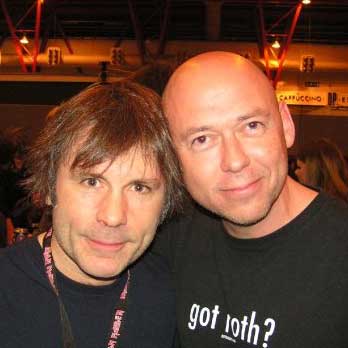
Paul Elliott has worked for leading music titles since 1985, including Sounds, Kerrang!, MOJO and Q. He is the author of several books including the first biography of Guns N’ Roses and the autobiography of bodyguard-to-the-stars Danny Francis. He has written liner notes for classic album reissues by artists such as Def Leppard, Thin Lizzy and Kiss. He lives in Bath - of which David Coverdale recently said: “How very Roman of you!”
You must confirm your public display name before commenting
Please logout and then login again, you will then be prompted to enter your display name.
“He seems to access a different part of his vast library of music genre from the jukebox-in-his-head! This album is a round-the-world musical trip”: Joe Bonamassa announces new album, Breakthrough – listen to the title-track now
"There had to be some sort of telepathy going on because I've never seen spontaneous inspiration happen at that level”: The genius of Eric Clapton's controversial masterpiece, Layla








